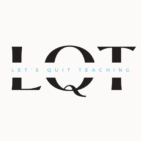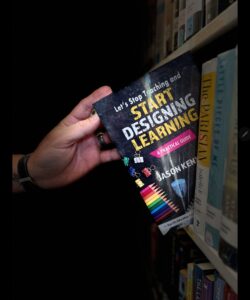Imagine a classroom where every lesson sparks curiosity, every student feels empowered, and every teacher knows exactly how their methods shape learning. This isn’t a distant dream, it’s the potential of evaluative thinking in K-12 public schools. Too often, education operates on autopilot: teachers deliver content, assuming learners will absorb it. “I taught it, now it’s up to them to learn it” is a common mindset, but it’s a barrier to meaningful progress. Evaluative thinking flips this script, urging educators to reflect deeply on their impact, choose strategies with precision, and collaborate to refine their craft. By embracing this approach, teachers become architects of learning, not just deliverers of lessons, unlocking transformative outcomes for kids.
Evaluative thinking is a disciplined process of setting clear learning goals, selecting high-impact tools, assessing their effectiveness, and collaborating to improve results. It’s about asking, “What do I want students to learn? How will I know they’ve learned it? What’s working, and what needs to change?” Research, like John Hattie’s Visible Learning (2009), shows that teachers who actively evaluate their impact through feedback, data, and reflection can double the rate of student achievement. Yet, the biggest challenge and opportunity in K-12 education lies in getting teachers to embrace this mindset. By shifting from a “teach and hope” approach to one of intentional, reflective practice, evaluative thinking can revolutionize how we educate.
What Is Evaluative Thinking—Really?
Evaluative thinking is not reflection lite. It’s not “How’d the lesson go today?” It’s a disciplined, daily habit of asking:
- What do I want my learners to know or do by the end of this?
- How will I know if they got it?
- If they didn’t, what’s my move?
That’s it. It’s about clarity, intention, and measurable impact. It’s knowing what learning is, not just assuming it happened. It’s the professional pause that turns good teaching into purposeful design.
John Hattie’s Visible Learning research backs this up. Teachers who know their impact—through formative assessments, timely feedback, and active use of student data—can nearly double the rate of student achievement. Feedback alone clocks in at an effect size of 0.75. Formative assessment? 0.77. Teacher clarity? 0.84. That’s not a hunch. That’s decades of data pointing to one conclusion: Evaluative teachers are transformative teachers.
Breaking the “Teach and Hope” Habit
The phrase “I taught it, now it’s up to them” sounds harmless. But that mindset has been holding us back for decades. It assumes the job is to deliver content, not to ensure learning. And it lets adults off the hook while letting learners fall through the cracks.
We’ve got to stop asking, “Did I teach it?” and start asking, “Did they learn it and how do I know?” Without evidence, we’re just guessing. And learners don’t need guesses. They need teachers who are willing to pivot, adjust, reteach, and redesign based on what’s actually happening in the room. As the National Research Council said back in 2000, real learning requires continuous assessment and adaptation. Anything less is just performance.
The Reflective Teacher: Knowing Your Impact
We all know that feeling. You walk out of class thinking, “That went great!” But here’s the catch: feeling good about a lesson and knowing it worked are not the same thing. Evaluative thinking demands proof, not vibes.
And it works. The Bill & Melinda Gates Foundation found that teachers who regularly reflect on data, real, learner-centered data, can improve outcomes by the equivalent of three extra months of learning in a school year. That’s what happens when teachers stop guessing and start knowing. When you walk into your classroom with clear intentions, choose tools with impact, and actually look at what learners are showing you, the work stops being a gamble and starts becoming growth.
Collaboration Is the Multiplier
This is where it gets even better: evaluative thinking grows exponentially in a community. Collaborative Teams that operate on evidence, not opinion, become engines for growth. When teachers come together and ask:
- “What do we want kids to learn?”
- “What’s the evidence?”
- “What worked for you and why?”
That’s not just a meeting. That’s a movement.
Ronfeldt et al. (2016) found that schools with robust collaborative structures saw significant gains in math and reading. Why? Because collaboration, when rooted in evidence, becomes collective efficacy. And collective efficacy? Hattie says it’s the most powerful influence in education with an effect size of 1.57. So stop wasting PLCs on housekeeping items. Use Collaborative Teams to do the one thing that changes everything: evaluate impact.
This Isn’t Extra Work; It’s the Real Work
Some folks think evaluative thinking sounds like more to do. But the truth? It saves you from doing the wrong things over and over. When you evaluate your impact you stop reteaching material no one needed help with. You stop guessing which student is struggling. You stop designing lessons based on assumption, and start designing with clarity. In a system built on “teaching,” the teacher does most of the work. In a classroom built on evaluative thinking, the learners do. And that’s exactly how it should be.
If your job is “to teach,” you’ll deliver content. If your job is to create learning, you’ll evaluate impact. So let’s call it what it really is: Evaluative thinking is a redefinition of the role. It’s not more work, it’s better work. It’s the shift from covering curriculum to cultivating clarity. From checking boxes to checking understanding.
When you operate this way, you know what’s working. You change what isn’t. You grow learners, not just complete lessons. And when the entire school starts thinking this way, when evaluative thinking becomes the heartbeat of the culture, learners don’t just pass. They thrive.
So here’s the challenge—to you, to your team, to your school. Reflect on your impact. Choose tools that actually move the needle. Collaborate to refine them. When we do that, when we stop teaching and start evaluating, we don’t just change instruction. We change lives. We don’t just fill seats. We ignite learners. And that, friends, is the job.


